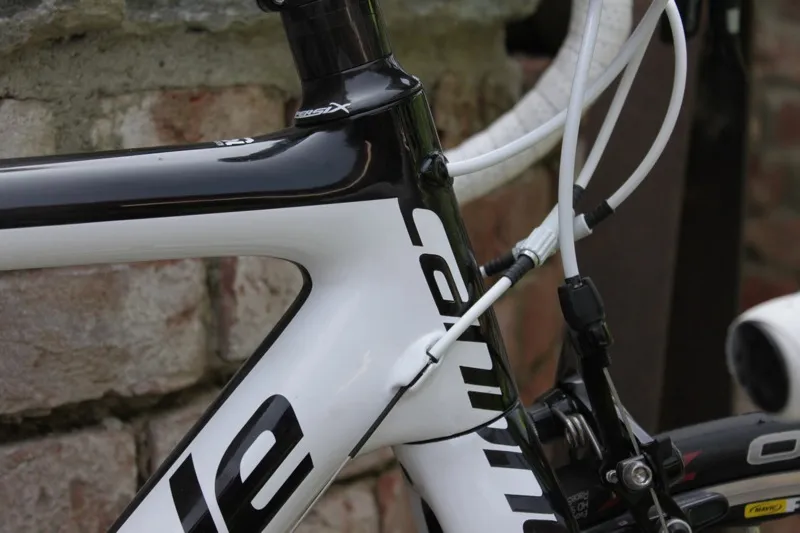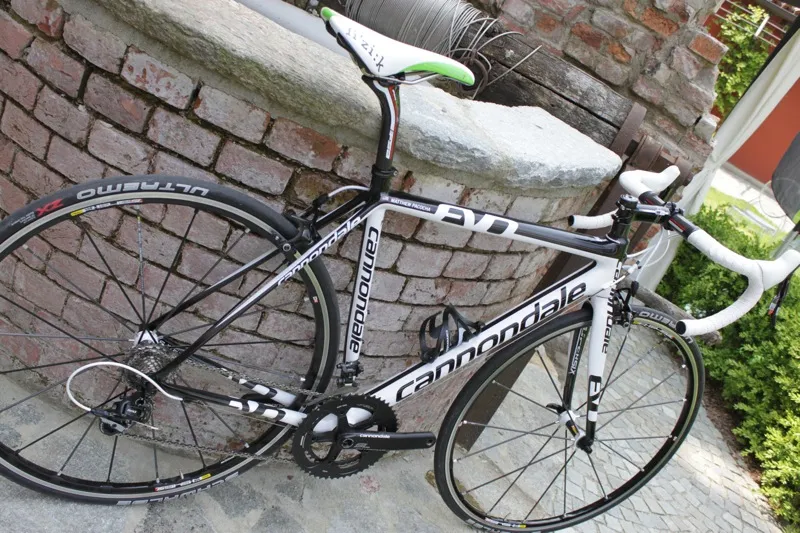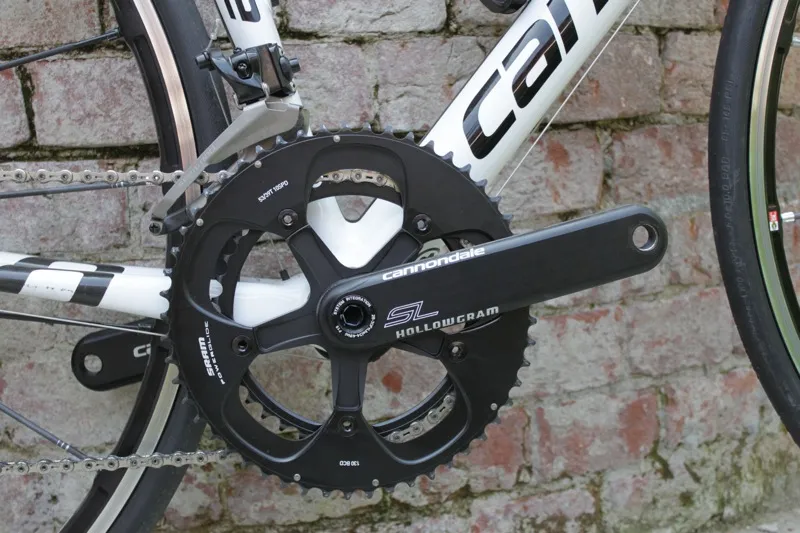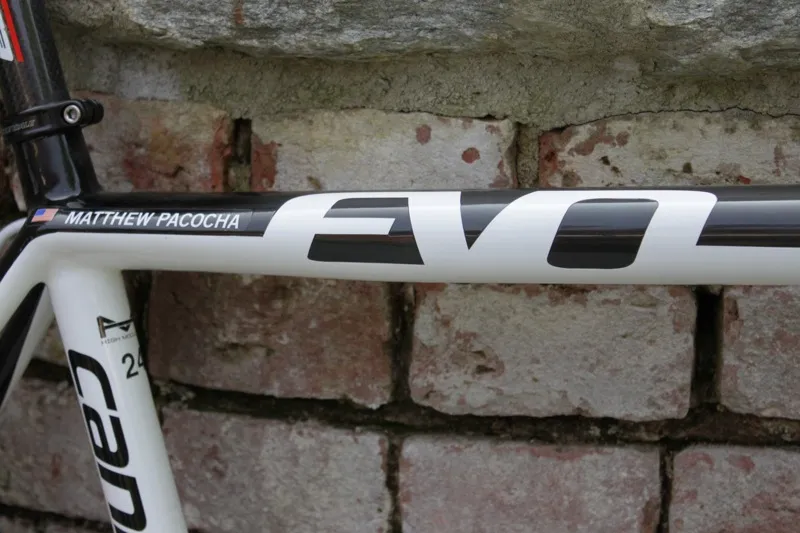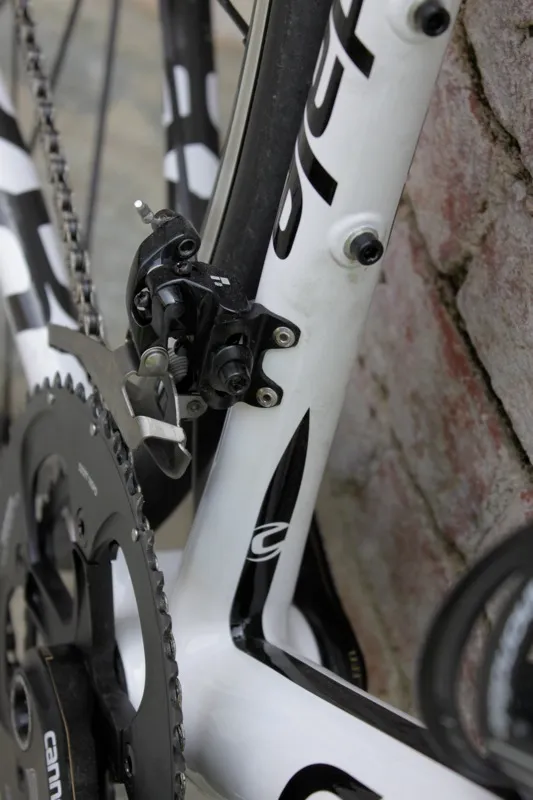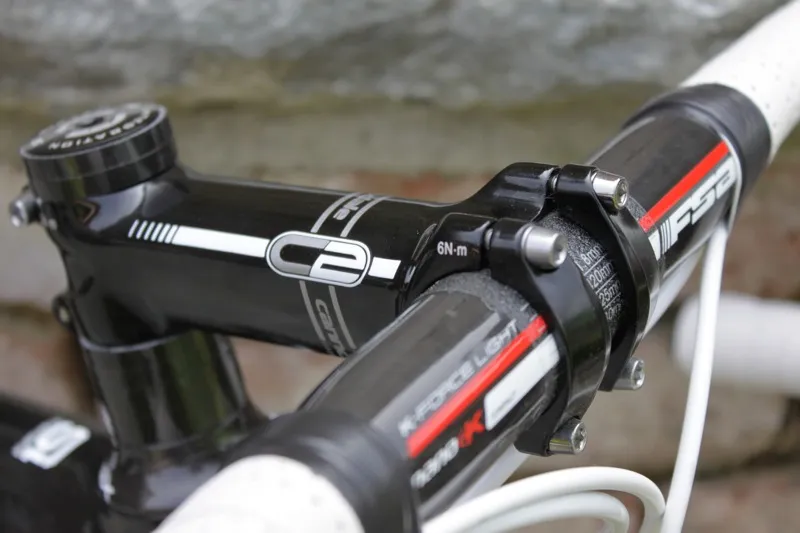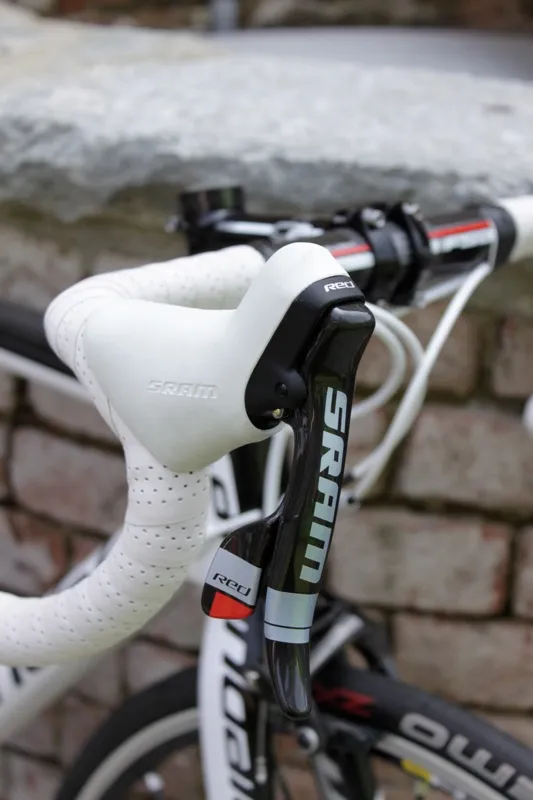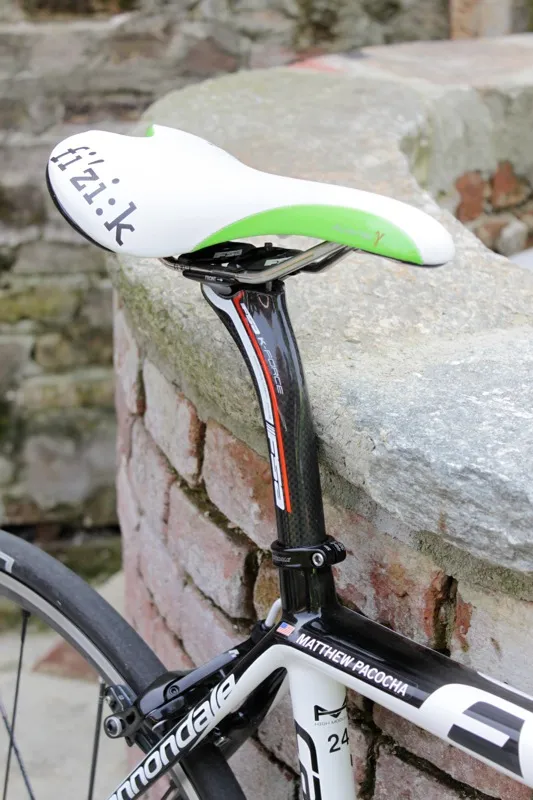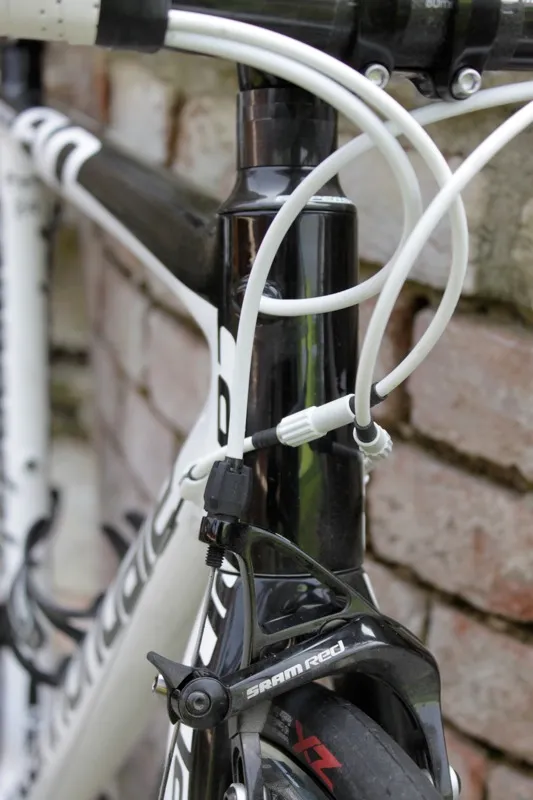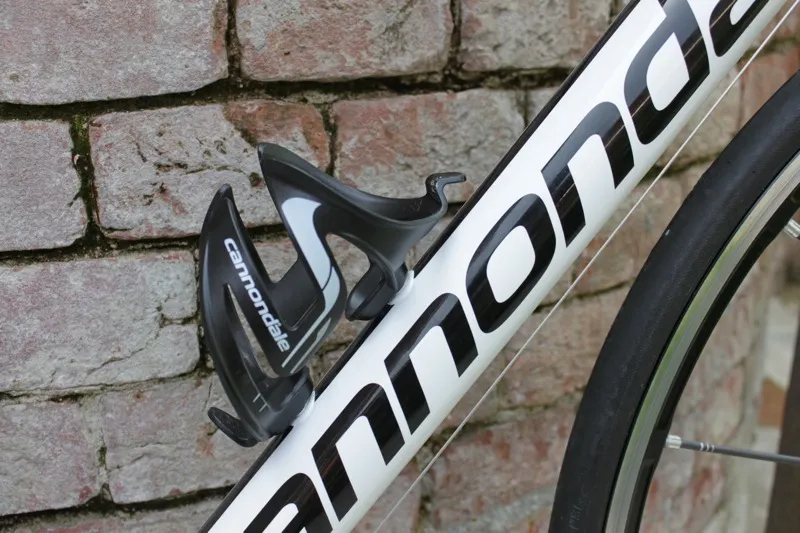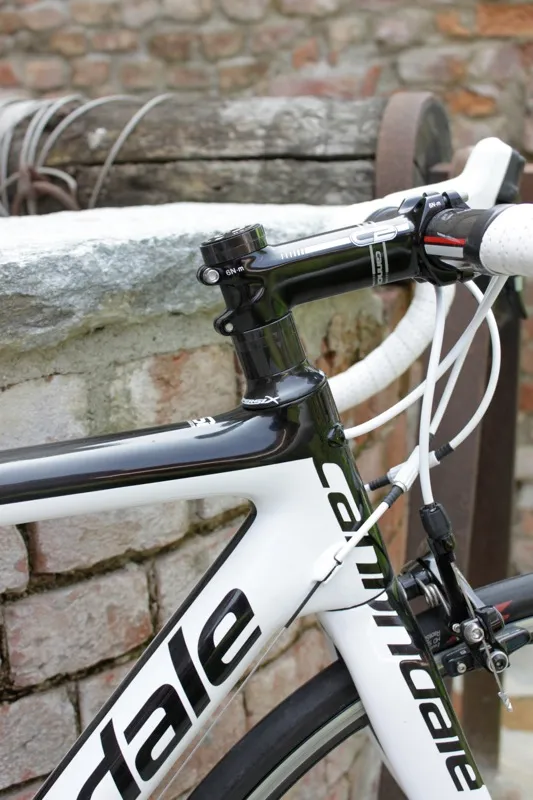Cannondale’s SuperSix EVO was launched earlier this month with great claims of light weight, high stiffness, tuned flex and general high performance. So, does it live up to the hype? For the most part, yes – despite the seeming extravagance of some of the claims. The EVO is a thoroughbred professional racer; it’s stiff and extremely light, but if you’re expecting a Cadillac-like ride you’ll need to look elsewhere.
Light, stiff and smooth...
We spent two days on the bike riding in the hills around Torino, Italy. But this was no production model – instead it was a ‘launch spec’ EVO outfitted with components from the Liquigas-Cannondale team sponsors.
The first thing you notice when you’re presented with the SuperSix EVO is its weight. Our 52cm test bike weighed just 13.46lb (6.11kg) without pedals. The bike feels light in hand and similarly light on the road, especially when you stand up and flick it around.
Despite its light weight, the EVO is incredibly stiff torsionally. Stand up — if you’re a rider in the 155lb range with normal wattage output — and you can't make it deflect, despite the reduction in head tube size and tubeset diameters compared to the previous generation SuperSix Hi-Mod. Cannondale say this is due to their tube shape selection, Ballistic Carbon material and, most surely, their new carbon layup techniques.
This stiffness translates to stability and what some of the Liquigas-Cannondale riders describe as the ‘point and shoot’ handling properties of the bike. It’s this feature that we believe has the most influence over the bike’s admirable descending capabilities — its strongest feature. So far, we’re sold.
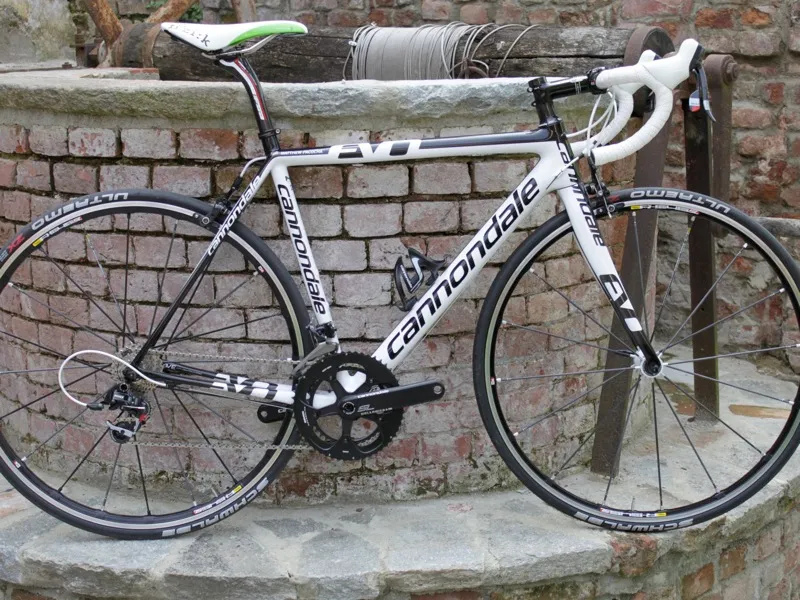
... but less comfortable than expected
So the bike is super-light, super-stiff, and super-smooth, right? Well, we agree wholeheartedly with the first two claims, but after Cannondale’s presentation we expected more of the latter. When you hear claims of ‘micro suspension’, you expect something more tangible than just a moderately smooth-riding frame. The effects of the EVO's Speed Save fork and stays are incredibly subtle.
While the frame is by no means harsh, it isn’t the smoothest carbon chassis we’ve ridden. We believe Cannondale's claims that the EVO is much smoother than the old SystemSix, but it’s still a bike that’s designed for the professional racer.
While not quite as impressive as the frame’s torsional rigidity, its pedaling stiffness is very good. It seems like the harder you push on the pedals, the more the frame resists bending. This may be one of the subtle ways the Speed Save system materializes on the road – by keeping the bike feeling slightly soft when unloaded but stiff when power is applied.
At the Cannondale launch we heard nothing but rave reviews of the SuperSix EVO, but at times, from the seated position, we found the frame felt slightly sluggish. This is puzzling. The bike is razor sharp on descents, and passes the head-tube slap test with flying colors; likewise, when you stand up you can't feel any pedaling flex. But still, at times it felt slightly sluggish to us.
We put this to Cannondale’s vice president of R&D, Chris Peck, and with candor he admitted he'd had similar feedback from Vincenzo Nibali of Liquigas-Cannondale. Apparently, at the previous evening’s dinner Nibali had confided to him that the EVO felt slower than his old bike, but that he also felt fresher at the end of rides on the new machine.
Peck had an explanation for Nibali, and it may translate to us as well. “Think of how a tire feels with 140psi in it,” he said. “Compared to a tire with 90psi it feels faster — but it’s not.” That's because at 140psi you feel every pebble on the road, while at 90psi the tire absorbs impacts and rolls faster. Peck says the sluggish feeling is likely the Speed Save design working; by absorbing bumps rather than deflecting, it actually makes the bike faster.
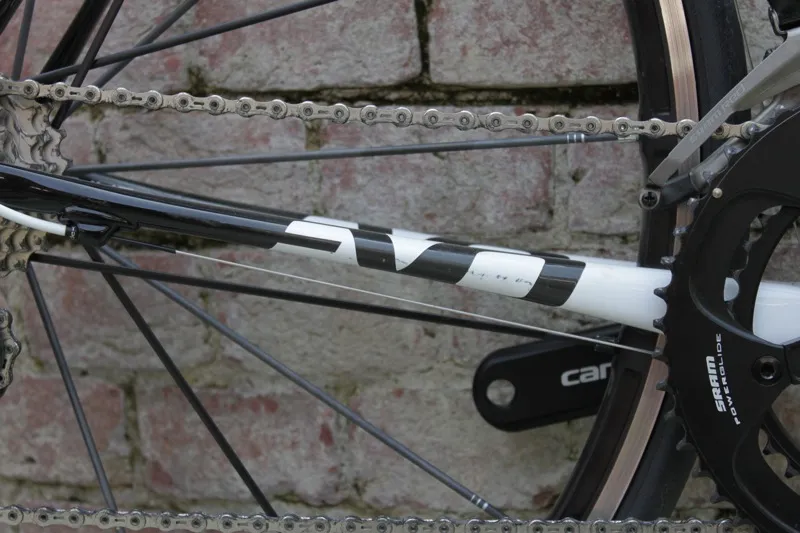
Proven geometry — although short head tube won't suit all
Geometry wise, the SuperSix EVO is virtually identical to the original, though Cannondale have made a slight (less than 1º) modification to the seat tube angle on some of the smaller sizes. On the road, it’s a neutral bike with a fairly low bottom bracket. The angles seem to complement the carbon design and the abilities of the Speed Save system — it’s comfortable at speed and offers just a slight bit of understeer.
The top tube is fairly horizontal, giving the bike a traditional look (which we prefer) and the 52cm size fitted us well, with its 53.5cm top tube. The EVO once again exhibits its pro pedigree in the form of a short head tube — just 120mm in the 52cm size — which brought our fairly flexible test rider, who prefers a performance fit, to use a total of 4.3cm of spacers under the stem. This may be an issue for some riders, forcing them to run their stem with rise or suffer the consequences associated with a large stack of spacers, namely steerer tube flex.
We've gone over the SuperSix EVO’s frame and the methods used to build it in previous stories on BikeRadar. We’ll also refrain from going into too much detail here about the components on our test bike because this build will not be available for sale. Our EVO was outfitted with mostly high-end but practical kit — SRAM Black Red with a Cannondale Hollowgram 2 crankset, Mavic R-SYS SL clincher wheels and FSA K-Force Light handlebar and seatpost — along with a more working class Fi’zi:k Aliante Gamma saddle and 110mm Cannondale C2 house-brand stem.
Swap out the clincher wheels for a set of tubular race wheels and you’re down below the 13lb mark, easily, and that's quite impressive, to say the least. This is a worthwhile upgrade throughout the range, from the base equipped model through to the Dura-Ace Di2 bike. On the top-tier Ultimate model, however, Cannondale go ahead and offer you the race wheels; so if you buy this bike, you’ll also need a set of heavier training wheels.
